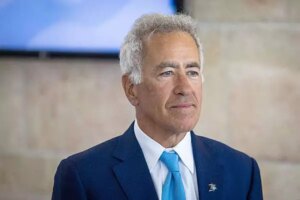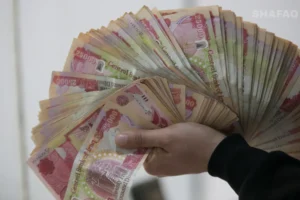
Standing in Abu Ghraib, the politics of forgetting in Iraq were revealed in stark relief. The story of female political prisoners during Saddam’s reign is a complex one. The intricacies of their lives, detention and interrogation, and incarceration have often been overlooked in collective memory about Ba’athist Iraq. Amidst hundreds of thousands who lost their lives in executions, prisons, war, and crippling sanctions, and those that were killed in the post-2003 civil war and rise of ISIS, the stories of female political prisoners can become overshadowed amongst so much suffering. Yet they are determined to stake a claim in the narrative of resistance to Ba’athist totalitarianism, constructing a past that shapes themselves as active historical actors. In a social milieu where discomfort with women’s bodies remains, they are determined to bear witness and be witnessed – on their terms.
Their painful marginalizations include their erasures within prisoners’ associations. In September 2018, I was invited to a conference of former political prisoners hosted by Al-Ataba Al-Husayniya (The Hussain Holy Shrine) and the Mu’assassat al-Sujina’ al-Siyasiyeen (Iraq’s official Political Prisoners Foundation), established in 2005 to support and recompense the thousands of Iraqis who were incarcerated during Saddam’s rule. Men on-screen recounted in lucid detail their testimonials of time in Saddam’s notorious detention centers. Stretched in front of me were rows and rows of former male prisoners. I took my seat in the last two rows of the auditorium, reserved for a handful of women who sat silently observing the proceedings. One of the women turned to me and remarked, “It’s all men talking.” When I nodded in surprise, she smiled knowingly and asked me what brought me to the conference. I explained that I was working on a book on Zaynab bint ‘Ali. “Excellent! Then you can write about us,” she smiled, gesturing to the women next to her. “We are all like Zaynab, Salamun Alayha [peace be upon her], here.” All these women – neither speaking nor spoken of – had been prisoners too. Yet their stories were still being obscured and erased – this time by those men who had endured the same oppression. To counter that silence, these Shi’a female political prisoners embraced narratives of imprisonment and the suffering of the women at the heart of the story of Karbala. In them, I had found Zaynab in Al-Rashad.
My forthcoming manuscript tackles the nexus between Shi’ism, gender, incarceration, and memory, a lens that can be applied in different spaces and different times. Al-Rashad functioned as a space of identity creation for these women who hailed from different regions, tribes, and backgrounds. For these Shi’i women, the prison cell created alternate visions of the nation – one that rejected Ba’athist ideology and its erasures. Zaynab’s sacrifice was especially resonant for them – they consistently drew parallels to her relevance in the Iraqi political context. In interrogation and then prison, these women faced years of violence, deprivation, and mental traumas. They understood their ordeals in the context of a Shi’i paradigm of history, with Karbala at its heart. Their histories require a reconceptualization of the prison cell as a space of resistance, understanding how the bodies of women, both real and imagined, created new contours of a Shi’i sacred geography. In prison, they resisted the emotional regime (William Reddy) of the Ba’ath. Zaynab made legible the worlds they built for themselves.
Much has been written about the cruelty of the Ba’athist prison regime, initially sourced through the accounts of exiles, activists, and former prisoners who had escaped Iraq. After the overthrow of Saddam Hussein, the ‘discovery’ of the more than 11 million Ba’ath documents by the Iraq Memory Foundation has allowed scholars to return to what is too often the comfortable space of the archive, to give grounding to what can be a historian’s discomfort with oral sources and the failures of memory. Scholars such as Abbas Kadhim, Dina Rizk Khoury, Aaron Faust, Samuel Helfont, Lisa Blaydes, and Joseph Sassoon amongst others have done excellent work in mining these documents for the inner workings of the party and the state. Yet violence against women and the voices of resistance of those women are only traces in the archive, as they are in most state archives. The archives must be read against the grain and supplemented by other sources, imperfect as they may be. The manuscript seeks to do both – to foreground the real self-fashioning and oral histories of female political prisoners while exploring personal documents and the absences of archives. Though, “History is perpetually suspicious of memory,” as Pierre Nora’s famous claim asserts, in Between Memory and History: Les Lieux de Memoire, what emerges from these oral histories is how the memories of these women present, “An active process of creation of meanings…. [oral sources] reveal the narrators’ effort to make sense of the past and to give a form to their lives, and set the interview and the narrative in their historical context,” as argued by historian Alessandro Portelli in The Death of Luigi Trastulli and Other Stories. The contours of the lives of these women – their families, emotions, faith, histories, and bodies – are largely absent from archival records, but they speak themselves into the story of the nation. How they remember their pasts in the present reveals how ideas of gender and Shi’i history interact with national identity to form the ethical self, and how Zaynab helps shape their ideas of the past and the present.
The words and bodies of these political prisoners form what scholar Brahim El Guabli describes as “other-archives.” In Moroccan Other Archives: History and Citizenship After State Violence, El Guabli movingly grapples with the, “Texts, artifacts, alphabets, embodied experiences, toponymies, and inherited memories where stories of the excluded, the silenced, and the forgotten live in a ghostly state, ready to articulate loss even as they are situated outside the margins of what is considered canonical.” While traditional archives are detained, contained, guarded, other-archives, “Are part of an unfolding memory and history, existing to bridge the gap between a past that is not yet finished and a society still impacted by the consequences of this unfinished past.” In Iraq, a country that has yet to grapple with transitional justice and the legacies of violence and rupture, these other-archives of artifacts, bodies, oral histories, and texts, “Chronicle repression, disappearance, and silence, alongside of the affective reactions to all of these.” Other-archives allow these political prisoners to actively engage in the process of remaking the nation and rewriting its history. They become active historical agents, not merely silent victims erased from the power of the archive and the state. They do so in language that resonates with their identity and how they see their role in the nation and its future possibilities. Their desire to be seen and known makes their bodies evidence of the past, even in a nation uncomfortable with those bodies. Thus, “Other-archives are sites for liberation and citizenship,” according to El Guabli. “Other-archives’ creators use their agency to assert their freedom and civic rights by re-envisioning history, pushing against taboos, censorship, and self-censorship. Thus, these women see themselves as martyrs, witnesses, and desire to be witnessed in ways that resonate with understandings of Zaynab.
Religion in prison, like in Iraq’s carceral network, countered that state’s appearance of totalizing control and created an alternate moral order. For women humiliated and stripped, both socially and physically, the framing of Zaynab, Karbala, and Shi’ism’s grand narratives reverses the government’s attempt to debase them. In their work on Muslim political prisoners in the United States and Egypt, Walaa Quisay and Asim Qureshi (When Only God Can See: The Faith of Muslim Political Prisoners) highlight the faith of prisoners, arguing, “Our study of religion emphasizes its centrality to their personhood, community-making, and prison life.” As the prison infrastructure seeks to, “Sever or disrupt the prisoners’ relationships with the divine – and with the world, body, soul, time, and community – religion becomes a significant shield,” they reason. If the guards, interrogators, and judges exercised power over these women, claiming the state’s authority to enact violence on its own people, then invoking Zaynab was a challenge to that power. In Shi’i narratives, Zaynab bint ‘Ali traveled through all the sites of government power – the battlefield, the governor of Kufa, the Umayyad court, the prison – and was subjected to its attempt at control but ultimately emerges ‘victorious’ by defying injustice and keeping alive Husayn ibn ‘Ali’s mission. State power is thus neutralized by fidelity to Karbala’s moral order, embodied by women. Carceral theology means understanding how ritual, narrative, and emotion accommodate the restrictions of the built structures of confinement. Zaynab re-grounded them with the world, body, soul, time, and community.
The stories of these prisoners and these women are critical to understanding how notions of citizenship and national identity were constructed in Iraq – who was included or excluded from the nation, whose suffering deserves to be remembered and whose should be erased. The public life of the prison, marking notions of freedom and unfreedom, continues to impact collective memory in Iraq. These women challenged the rhetoric of the “modernizing state” versus the “backwards” religious citizens in Ba’athist rule. Yet their struggles to gain recognition also reveal much about Iraq’s present challenges. Amidst a growing frustration with “sectarian” narratives, a rewriting of the nature Ba’athist state has occurred. Scholars now argue it was not a sectarian regime, and current generations seek to leave those divisions and narratives in the past. Memory in Iraq continues to be fraught, politicized, and contested. As argued by Amir Taha in Sovereignty and Nationalism in Contemporary Iraq through the Memory of the 1991 Uprising: “The lack of any official narrative about the Ba’athist period illustrates both the absence of a societal consensus concerning Iraq’s difficult legacy and the weakness of the Iraqi state in promoting or coordinating an official public memory.” Many of the former political prisoners at Al-Rashad have been involved in a campaign to create a museum at the site. However, they face public challenges, inertia, and opposition in this quest. The politics of memorialization around prisons, however, is not unique to Iraq. The women of Al-Rashad are a microcosm of how a modern carceral system works in different contexts and, “How and whom these institutions have been used to control, confine, discipline, and exploit,” in the words of Golnar Nikpour. Yet the story of prisons, the public life of prisons, and the afterlives of the imprisoned is a transnational story; carceral regimes remain an enduring feature of our modern world. In a context of public discourse about resistance, the agency of political prisoners of regimes and how women choose to embody that resistance must be foregrounded.
[1] Surya al-Sultani, Interview with author, September 29, 2018, Karbala.
[2] Saadiyah Odhaib Hlail, Interview with author, February 4, 2025, Baghdad.
[3] Layla al-Khafaji, Interview with author, September 28, 2018, Baghdad.





